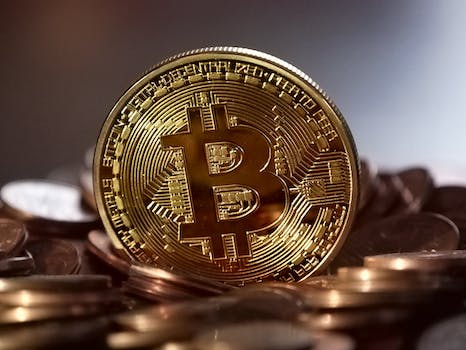

-
Table of Contents
"Unveiling the Future: A Comprehensive Analysis of the NFT Market in 2024"
Introduction
The analysis of the NFT market in 2024 provides insights into the projected trends, growth, and potential challenges within the non-fungible token (NFT) industry. This analysis aims to shed light on the market's future landscape, including factors such as market size, adoption rates, regulatory developments, and emerging use cases. By examining these aspects, stakeholders can gain a better understanding of the NFT market's trajectory and make informed decisions regarding investments, partnerships, and strategies.
Emerging Trends in the NFT Market in 2024
The NFT market has experienced significant growth and evolution in recent years, and as we look ahead to 2024, it is important to analyze the emerging trends that will shape this market. NFTs, or non-fungible tokens, have gained popularity as a way to authenticate and trade digital assets, such as artwork, music, and collectibles, using blockchain technology. In this article, we will explore some of the key trends that are expected to dominate the NFT market in 2024.
One of the most notable trends in the NFT market is the increasing integration of NFTs into the gaming industry. In recent years, we have seen a rise in blockchain-based games that utilize NFTs to enable players to own and trade in-game assets. This trend is expected to continue in 2024, with more game developers incorporating NFTs into their games. This integration not only provides players with a new level of ownership and control over their in-game assets but also opens up new revenue streams for game developers through the sale of NFTs.
Another emerging trend in the NFT market is the expansion of NFTs beyond digital art and collectibles. While digital art has been the primary focus of the NFT market thus far, we are starting to see NFTs being used in other industries, such as real estate and virtual reality. In 2024, we can expect to see more experimentation and innovation in the use of NFTs across various sectors. For example, NFTs could be used to tokenize real estate properties, allowing investors to buy and sell fractional ownership of physical assets. Similarly, NFTs could be used to create unique virtual experiences in virtual reality platforms, offering users exclusive access to virtual spaces or events.
Furthermore, sustainability and environmental concerns are likely to become increasingly important in the NFT market in 2024. The energy consumption associated with blockchain technology has been a subject of criticism, as it requires significant computational power. In response to these concerns, we can expect to see the development of more eco-friendly blockchain solutions that reduce the carbon footprint of NFT transactions. Additionally, there may be a shift towards more sustainable practices in the creation and distribution of NFTs, such as using renewable energy sources and offsetting carbon emissions.
In terms of market dynamics, we can anticipate a maturing of the NFT market in 2024. As the market becomes more established, we can expect to see increased regulation and standardization. This will help to address some of the current challenges in the NFT market, such as issues with provenance and copyright infringement. Additionally, as the market matures, we may see a consolidation of platforms and marketplaces, with larger players emerging as dominant forces in the industry.
Lastly, the democratization of NFTs is likely to be a significant trend in 2024. Currently, the NFT market is dominated by artists, celebrities, and high-profile collectors. However, as the market evolves, we can expect to see a broader range of participants entering the space. This could be facilitated by the development of user-friendly platforms and marketplaces that make it easier for individuals to create, buy, and sell NFTs. This democratization of the NFT market has the potential to unlock new opportunities for artists, creators, and investors, allowing them to participate in the digital economy in a more inclusive and accessible manner.
In conclusion, the NFT market is poised for continued growth and evolution in 2024. The integration of NFTs into the gaming industry, the expansion of NFTs beyond digital art, sustainability concerns, market maturation, and democratization are all key trends that will shape the NFT market in the coming years. As the market continues to evolve, it is important for stakeholders to stay informed and adapt to these emerging trends to capitalize on the opportunities presented by the NFT market.
Key Factors Influencing the NFT Market in 2024

The NFT market has experienced significant growth in recent years, and it is expected to continue its upward trajectory in 2024. Several key factors are likely to influence the NFT market during this period, shaping its development and determining its future direction.
One of the primary factors that will impact the NFT market in 2024 is the increasing adoption of blockchain technology. Blockchain provides a secure and transparent platform for buying, selling, and trading NFTs, making it an ideal technology for the digital art market. As more artists and collectors recognize the benefits of blockchain, the demand for NFTs is expected to rise.
Another factor that will shape the NFT market in 2024 is the growing interest from institutional investors. In recent years, we have seen a surge in institutional investment in cryptocurrencies, and this trend is likely to extend to the NFT market. Institutional investors bring significant capital and expertise to the market, which can help drive its growth and stability.
Additionally, the regulatory environment will play a crucial role in shaping the NFT market in 2024. As the market continues to expand, regulators are likely to take a closer look at NFTs and their associated risks. Clear regulations and guidelines can provide a sense of security to both artists and collectors, fostering trust and encouraging further participation in the market.
Furthermore, the evolution of digital platforms and marketplaces will have a significant impact on the NFT market in 2024. Currently, there are several prominent platforms for buying and selling NFTs, but as the market matures, we can expect to see new platforms emerge, offering innovative features and improved user experiences. These platforms will not only attract more participants but also facilitate the discovery and promotion of NFTs.
The integration of NFTs into various industries is another key factor that will influence the market in 2024. While the art world has been at the forefront of NFT adoption, other sectors such as gaming, music, and sports are also exploring the potential of NFTs. As more industries embrace NFTs, the market will expand, creating new opportunities for artists and collectors alike.
Moreover, the sustainability of the NFT market will be a critical factor in its long-term success. Concerns about the environmental impact of blockchain technology have been raised, particularly regarding the energy consumption of NFT transactions. In response, efforts are being made to develop more sustainable blockchain solutions. The adoption of greener technologies will not only address these concerns but also contribute to the market's overall sustainability.
Lastly, the global economic landscape will inevitably influence the NFT market in 2024. Economic factors such as inflation, interest rates, and consumer spending patterns can impact the demand for NFTs. A strong economy with increased disposable income can drive higher spending on NFTs, while a downturn may lead to a decrease in demand.
In conclusion, several key factors will shape the NFT market in 2024. The adoption of blockchain technology, the interest from institutional investors, the regulatory environment, the evolution of digital platforms, the integration into various industries, sustainability concerns, and the global economic landscape will all play a significant role in determining the market's growth and direction. As the market continues to evolve, it is crucial for artists, collectors, and investors to stay informed and adapt to these factors to make the most of the opportunities presented by the NFT market.
Future Prospects and Challenges for the NFT Market in 2024
The NFT market has experienced significant growth and popularity in recent years, with 2021 being a particularly explosive year for the industry. As we look ahead to 2024, it is important to analyze the future prospects and challenges that the NFT market may face.
One of the key prospects for the NFT market in 2024 is continued growth and mainstream adoption. NFTs have already made their way into various industries, including art, music, and sports. In the coming years, we can expect to see more artists, musicians, and athletes embracing NFTs as a way to monetize their work and engage with their fans. This increased adoption will likely lead to a larger and more diverse marketplace for NFTs.
However, with this growth comes challenges. One of the main challenges for the NFT market in 2024 is the issue of sustainability. NFTs are built on blockchain technology, which requires a significant amount of energy to operate. As the market expands, so does the energy consumption associated with it. This has raised concerns about the environmental impact of NFTs and the long-term sustainability of the market. In order to address this challenge, it will be crucial for the industry to find ways to reduce its carbon footprint and explore more sustainable alternatives.
Another challenge for the NFT market in 2024 is the issue of authenticity and copyright infringement. NFTs are often used to prove ownership and authenticity of digital assets. However, there have been cases where NFTs have been created without the consent or knowledge of the original creators, leading to copyright infringement. This raises questions about the legal framework surrounding NFTs and the need for stronger regulations to protect artists and creators. In order for the NFT market to thrive in 2024, it will be essential to establish clear guidelines and standards for the creation and sale of NFTs.
Additionally, the NFT market may face challenges related to market volatility and speculation. NFTs have gained a reputation for their high prices and speculative nature. While this has attracted many investors and collectors, it also raises concerns about the sustainability of the market. In order to ensure the long-term success of the NFT market, it will be important for stakeholders to promote transparency and educate buyers about the risks and potential rewards associated with investing in NFTs.
Despite these challenges, the future prospects for the NFT market in 2024 are promising. NFTs have the potential to revolutionize the way we buy, sell, and own digital assets. They offer a unique opportunity for artists and creators to monetize their work and connect with their audience in new and innovative ways. With continued growth and mainstream adoption, the NFT market has the potential to become a significant player in the global economy.
In conclusion, the NFT market in 2024 presents both opportunities and challenges. While the market is expected to continue growing and gaining mainstream adoption, it will also need to address issues related to sustainability, authenticity, and market volatility. By addressing these challenges and working towards a more sustainable and regulated market, the NFT industry can pave the way for a new era of digital ownership and creativity.
Q&A
1. What is the projected value of the NFT market in 2024?
The projected value of the NFT market in 2024 is estimated to reach $12.6 billion.
2. What factors are expected to drive the growth of the NFT market in 2024?
Factors expected to drive the growth of the NFT market in 2024 include increased adoption by mainstream artists, celebrities, and brands, advancements in blockchain technology, and growing interest from collectors and investors.
3. What challenges might the NFT market face in 2024?
The NFT market in 2024 may face challenges such as regulatory uncertainties, concerns over environmental impact due to high energy consumption, potential market saturation, and the risk of fraudulent or low-quality NFTs.
Conclusion
In conclusion, the analysis of the NFT market in 2024 suggests that it will continue to grow and evolve. The market is expected to witness increased adoption and mainstream acceptance, leading to a surge in demand for digital assets. However, challenges such as scalability, environmental concerns, and regulatory frameworks may need to be addressed to ensure the sustainable growth of the NFT market. Overall, the future of the NFT market appears promising, with opportunities for artists, collectors, and investors to participate in this emerging digital economy.









